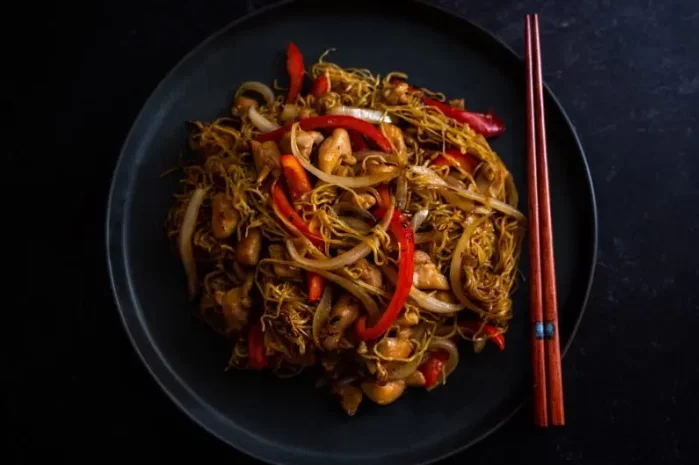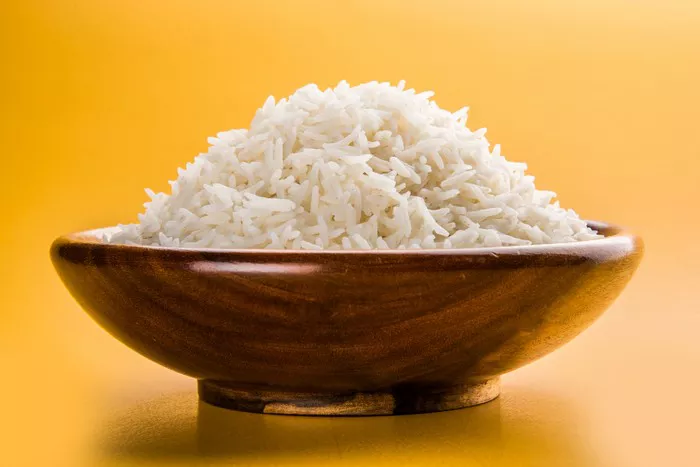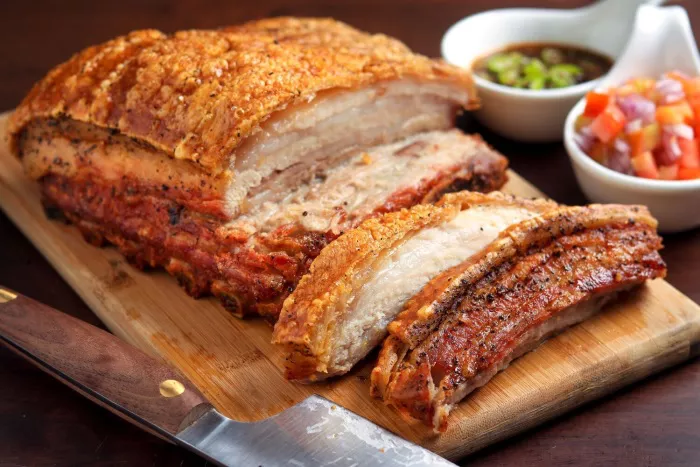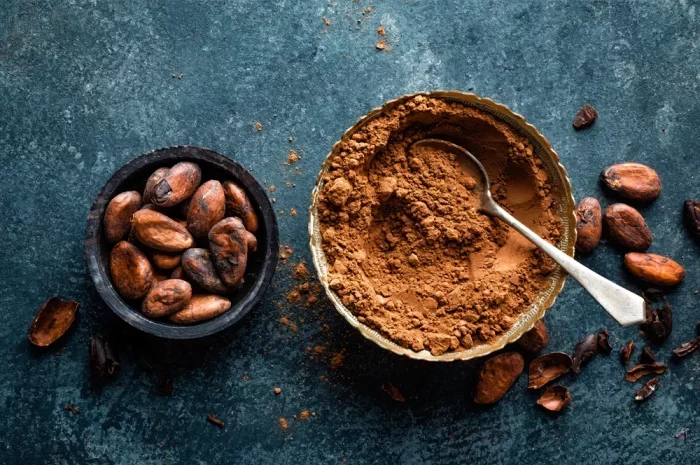Sweet and sour chicken, a beloved dish in Cantonese cuisine, embodies the perfect balance of flavors and textures – sweet, tangy, and crispy. This iconic dish has made its way from the streets of Guangdong, China, to international menus, enchanting taste buds worldwide. In this comprehensive guide, we’ll delve into the art of crafting Sweet and Sour Chicken Cantonese style. We’ll explore the history, ingredients, preparation, and even offer a homemade recipe to master this delectable dish in your own kitchen.
The History of Sweet and Sour Chicken
Cantonese cuisine, originating from the Guangdong province in southern China, is celebrated for its harmonious and well-balanced flavors. Sweet and sour chicken is a perfect representation of these culinary principles. The history of sweet and sour dishes can be traced back centuries, with their roots in Chinese cookery.
The concept of balancing sweet and sour flavors in Chinese cuisine is based on the principle of Yin and Yang. The sweet component represents Yin, while the sourness corresponds to Yang. The delicate equilibrium of these flavors aims to create a harmonious and appealing dining experience.
Sweet and sour chicken, also known as “gu lo yuk” in Cantonese, is believed to have been introduced to Western audiences through Chinese-American restaurants. This popular dish has undergone various adaptations, catering to the diverse tastes of diners around the world.
Ingredients for Sweet and Sour Chicken Cantonese Style
To create authentic Sweet and Sour Chicken Cantonese style, it’s essential to understand the key ingredients that make this dish unique. These ingredients are divided into three main components: the chicken, the sweet and sour sauce, and the vegetables.
Chicken:
Boneless chicken: Traditionally, boneless chicken pieces are used, such as chicken breast or thigh.
Marinade: To add flavor and tenderness, the chicken is typically marinated in soy sauce, rice wine, and cornstarch.
Sweet and Sour Sauce:
Sugar: The “sweet” component is provided by sugar. White sugar is commonly used, but some recipes call for brown sugar for a deeper flavor.
Vinegar: To achieve the “sour” element, vinegar is a key ingredient. White rice vinegar or apple cider vinegar is often used.
Ketchup: A crucial ingredient for the distinct red color and tangy sweetness of the sauce.
Soy sauce: Adds depth of flavor and saltiness to the sauce.
Pineapple juice: For a tropical twist and added sweetness.
Cornstarch: To thicken the sauce, create a glossy texture, and help it adhere to the chicken.
Pineapple chunks: These provide additional sweetness and a delightful texture to the dish.
Vegetables:
Bell peppers: Often used for their vibrant colors and crunchy texture. Red and green peppers are the most common choices.
Onion: Sliced onions add a subtle sweetness and depth of flavor.
Batter for Chicken:
Cornstarch: Used to coat the chicken pieces, creating a crispy and golden exterior.
Garnishes:
Sesame seeds or green onions: Used to garnish the dish for added visual appeal.
Preparing Sweet and Sour Chicken Cantonese Style
The process of crafting authentic Sweet and Sour Chicken Cantonese style involves several steps, from marinating the chicken to making the sweet and sour sauce and assembling the dish.
Marinating the Chicken:
Begin by cutting boneless chicken pieces, typically into bite-sized chunks.
Marinate the chicken in a mixture of soy sauce, rice wine, and cornstarch. This step adds flavor, tenderness, and a protective coating that helps the chicken stay moist during frying.
Preparing the Sweet and Sour Sauce:
In a separate bowl, combine sugar, vinegar, ketchup, soy sauce, and pineapple juice. This creates the sweet and sour base of the sauce.
Use cornstarch to thicken the sauce. Dissolve cornstarch in water and then add it to the mixture.
Heat the sauce over medium heat, stirring continuously until it thickens, becoming glossy and smooth. Once the sauce reaches the desired consistency, remove it from heat.
Frying the Chicken:
Heat a generous amount of oil in a wok or deep skillet for frying. The ideal temperature for frying is around 350°F (175°C).
Coat the marinated chicken pieces in cornstarch, ensuring they are evenly coated for a crispy texture.
Gently drop the coated chicken into the hot oil and fry until golden brown and crispy. Make sure not to overcrowd the pan, as this can lower the oil’s temperature and result in greasy chicken.
Once fried, remove the chicken and drain it on paper towels to remove excess oil.
Assembling the Dish:
In a clean wok or pan, sauté sliced onions and bell peppers until they become slightly tender but still retain their crispness.
Add the pineapple chunks to the vegetables and continue cooking briefly.
Pour the prepared sweet and sour sauce over the sautéed vegetables and pineapple, allowing it to heat and thicken.
Finally, add the crispy fried chicken to the wok, and gently toss everything together, ensuring the chicken is well-coated in the sweet and sour sauce.
Serve the Sweet and Sour Chicken Cantonese style immediately, garnishing it with sesame seeds or green onions for an added touch of elegance.
Homemade Sweet and Sour Chicken Recipe
Here is a homemade Sweet and Sour Chicken Cantonese style recipe that you can try in your own kitchen:
Ingredients:
For the Chicken:
1 lb boneless chicken breast or thigh, cut into bite-sized pieces
1/4 cup soy sauce
1 tablespoon rice wine or dry sherry
2 tablespoons cornstarch
For the Sweet and Sour Sauce:
1/2 cup sugar
1/4 cup white vinegar
1/4 cup ketchup
1 tablespoon soy sauce
1/2 cup pineapple juice
1 tablespoon cornstarch
2 tablespoons water
For Frying:
Vegetable oil for deep-frying
For Stir-frying:
1 red bell pepper, cut into chunks
1 green bell pepper, cut into chunks
1 onion, sliced
1/2 cup pineapple chunks (fresh or canned)
For Garnish:
Sesame seeds or green onions (optional)
Instructions:
In a bowl, marinate the chicken pieces in soy sauce, rice wine, and cornstarch. Let it sit for at least 30 minutes.
While the chicken is marinating, prepare the sweet and sour sauce. In a separate bowl, combine sugar, vinegar, ketchup, soy sauce, and pineapple juice.
Dissolve cornstarch in water and add it to the sauce mixture.
Heat the sauce in a pan over medium heat, stirring until it thickens. Set it aside.
Heat vegetable oil in a deep skillet or wok for frying.
Coat the marinated chicken pieces in cornstarch and fry them in batches until they turn golden and crispy. Drain on paper towels.
In a separate pan or wok, stir-fry the sliced onions and bell peppers until they become slightly tender.
Add pineapple chunks to the vegetables.
Pour the prepared sweet and sour sauce over the sautéed vegetables and pineapple. Let it heat and thicken.
Add the crispy fried chicken to the wok, tossing everything together to ensure the chicken is well-coated in the sweet and sour sauce.
Serve your homemade Sweet and Sour Chicken Cantonese style, garnishing with sesame seeds or green onions if desired.
Variations and Tips
While the classic Sweet and Sour Chicken Cantonese style recipe is a timeless favorite, there are several variations and tips you can explore to add your own unique touch:
Add Vegetables: Experiment with a variety of vegetables, such as broccoli, carrots, or snow peas, to create a colorful and vibrant dish.
Protein Alternatives: Instead of chicken, you can use other proteins like shrimp, pork, or tofu for a different flavor experience.
Spice It Up: If you enjoy a bit of heat, you can add red pepper flakes or sliced chili peppers to the sauce for a spicy sweet and sour chicken variation.
Fresh Pineapple: For a burst of freshness, use fresh pineapple chunks in the dish. Their natural sweetness will elevate the flavor.
Baked Version: To reduce oil consumption, you can try a baked version of sweet and sour chicken. Coat the chicken in breadcrumbs and bake until golden brown. Toss it in the sweet and sour sauce before serving.
Conclusion
Sweet and Sour Chicken Cantonese style is a delightful culinary masterpiece that combines the elements of sweetness, sourness, and crispy textures. This iconic dish, rooted in the principles of Yin and Yang, reflects the harmony and balance of Cantonese cuisine. With its origins in southern China and a rich history of adaptation, it has become a beloved dish worldwide.


























